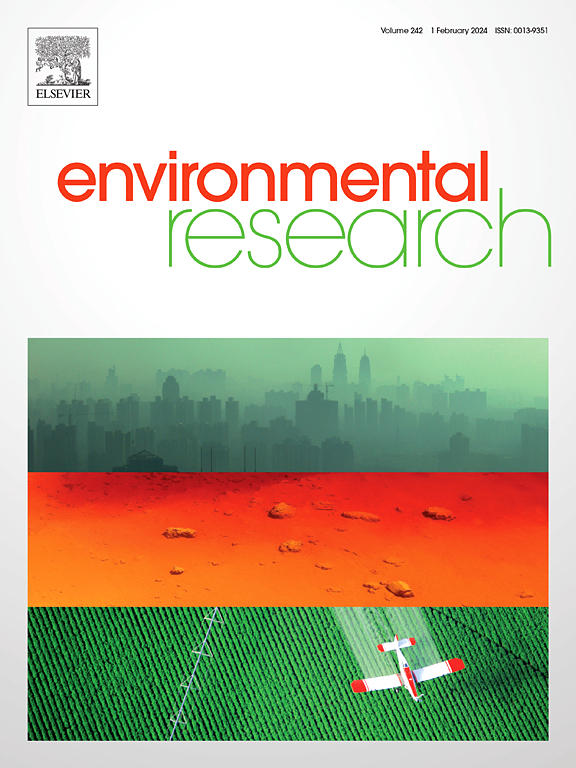C4-HSL drives rapid biofilm formation in low-temperature aquaculture effluent: strengthening structural stability of biofilm and improving nitrogen removal efficiency
IF 7.7
2区 环境科学与生态学
Q1 ENVIRONMENTAL SCIENCES
引用次数: 0
Abstract
During the centralized discharge of winter aquaculture wastewater, low temperature (≤15 °C) and low C/N ratio (≤5) result in delayed initiation of the biofilm process and decreased nitrogen removal efficiency.The quorum sensing (QS) communication system serves as the core mechanism regulating biofilm formation. This study examined how adding N-butyyl-L-homo-serine lactone (C4-HSL) affects the start-up and nitrogen removal in sequential batch biofilm reactors (SBBR) operated at 14 °C with a C/N ≤ 5. Biofilm adhesion tests showed that C4-HSL levels between 400 and 1200 ng/L notably boosted initial adhesion, peaking at 700 ng/L with a 57.5 % increase over the control. The SBBR results indicated that a high concentration of C4-HSL (700–1000 ng/L) effectively removed TN and COD, achieving a TN removal rate of 91.62 %, which was three times that of the control. C4-HSL enhances low-temperature biofilm nitrogen removal by remodeling the structure of functional microbial communities and enriching bacteria along with functional genes involved in biofilm formation and nitrification-denitrification. Additionally, C4-HSL specifically upregulated the abundance of flagella assembly and biofilm matrix synthesis genes (such as virD4, yegE) and quorum sensing-related genes (such as rpfB, bapA), promoting the secretion of extracellular polymeric substances. This drove the transition of biofilm structure from a loose state to a highly organized one, accelerating the maturation of biofilm adhesion and prolonging the stabilization period of the biofilm by 15–20 days. This study revealed the influence of C4-HSL on the initiation mechanism of low-temperature biofilm process from the perspective of quorum sensing regulation, providing a theoretical basis and technical pathway for developing aquaculture effluent treatment technologies based on quorum sensing regulation.

C4-HSL在低温养殖出水中促进生物膜快速形成,增强生物膜结构稳定性,提高脱氮效率
在冬季水产养殖废水集中排放过程中,低温(≤15℃)和低C/N比(≤5)导致生物膜过程启动延迟,脱氮效率降低。群体感应(quorum sensing, QS)通讯系统是调控生物膜形成的核心机制。本研究考察了添加N-丁基- l-同型丝氨酸内酯(C4-HSL)对14℃、C/N≤5的序批式生物膜反应器(SBBR)启动和脱氮的影响。生物膜粘附测试表明,C4-HSL浓度在400 - 1200 ng/L之间显著提高了初始粘附力,在700 ng/L时达到峰值,比对照组增加了57.5%。SBBR结果表明,高浓度C4-HSL (700 ~ 1000 ng/L)可有效去除TN和COD, TN去除率达91.62%,是对照的3倍。C4-HSL通过重塑功能性微生物群落结构、富集细菌以及参与生物膜形成和硝化-反硝化的功能基因来促进低温生物膜脱氮。此外,C4-HSL特异性上调鞭毛组装和生物膜基质合成基因(如virD4、yegE)和群体感应相关基因(如rpfB、bapA)的丰度,促进细胞外聚合物质的分泌。这使得生物膜结构由松散状态向高度组织化转变,加速了生物膜粘附的成熟,延长了生物膜的稳定期15-20天。本研究从群体感应调控的角度揭示了C4-HSL对低温生物膜过程启动机理的影响,为开发基于群体感应调控的水产养殖出水处理技术提供了理论依据和技术途径。
本文章由计算机程序翻译,如有差异,请以英文原文为准。
求助全文
约1分钟内获得全文
求助全文
来源期刊

Environmental Research
环境科学-公共卫生、环境卫生与职业卫生
CiteScore
12.60
自引率
8.40%
发文量
2480
审稿时长
4.7 months
期刊介绍:
The Environmental Research journal presents a broad range of interdisciplinary research, focused on addressing worldwide environmental concerns and featuring innovative findings. Our publication strives to explore relevant anthropogenic issues across various environmental sectors, showcasing practical applications in real-life settings.
 求助内容:
求助内容: 应助结果提醒方式:
应助结果提醒方式:


